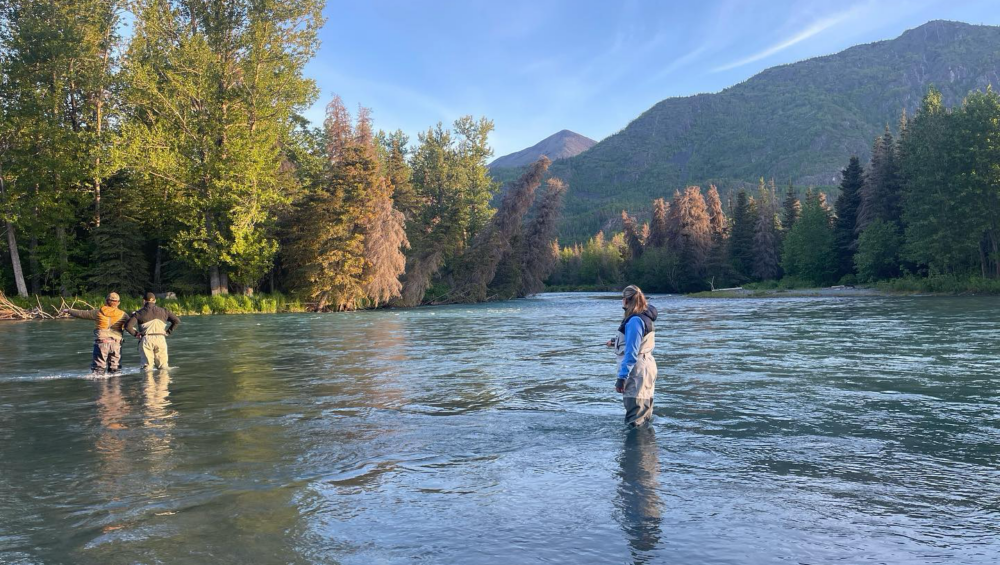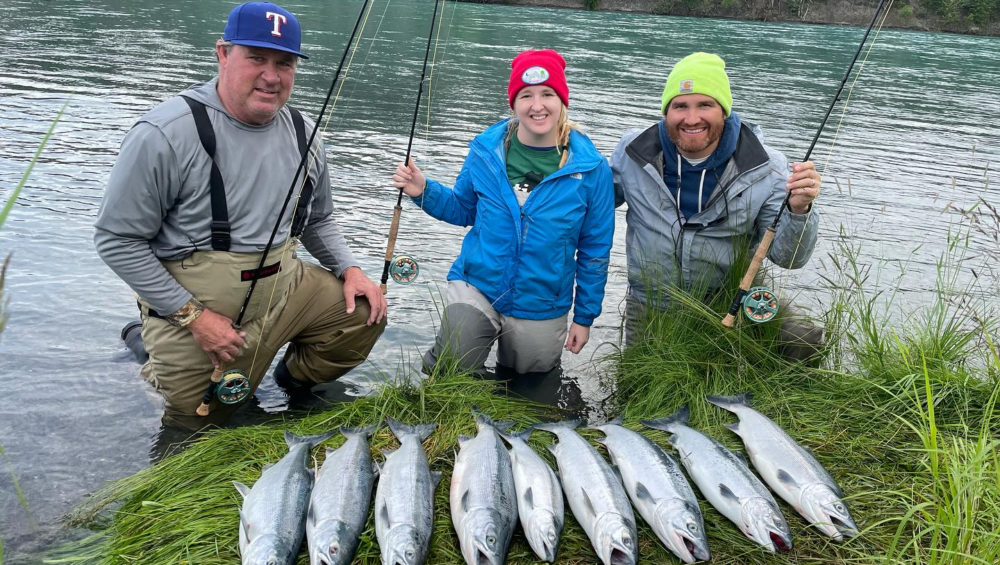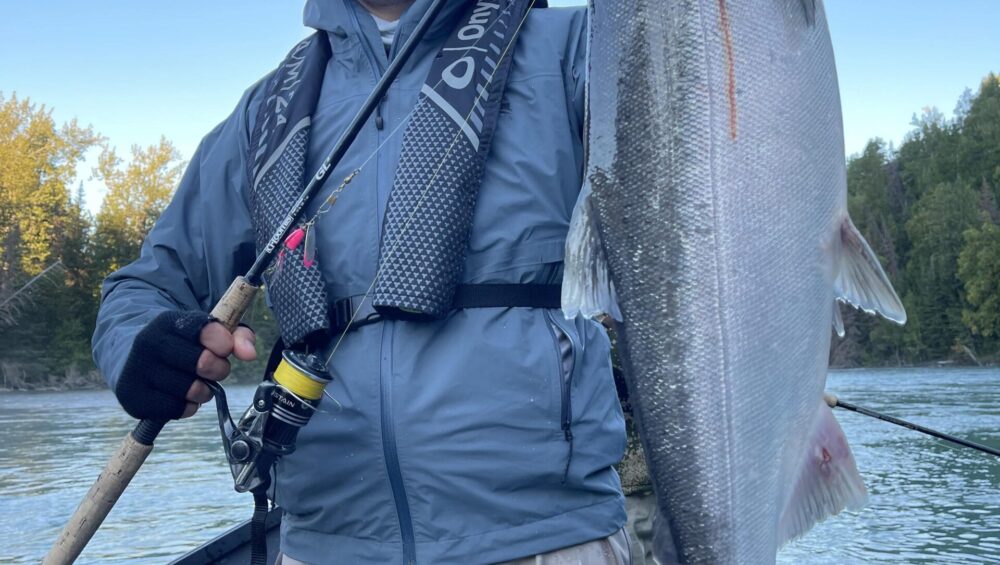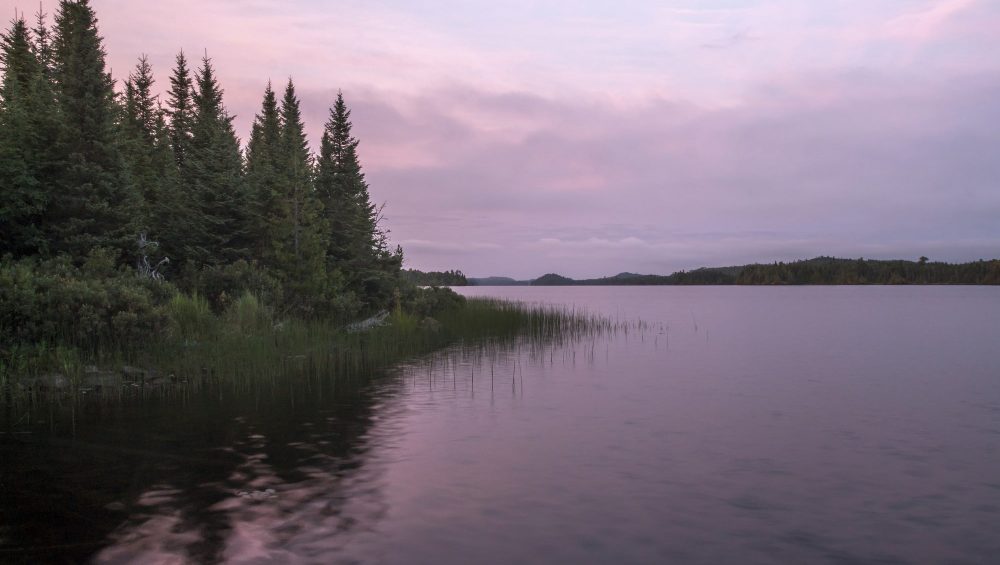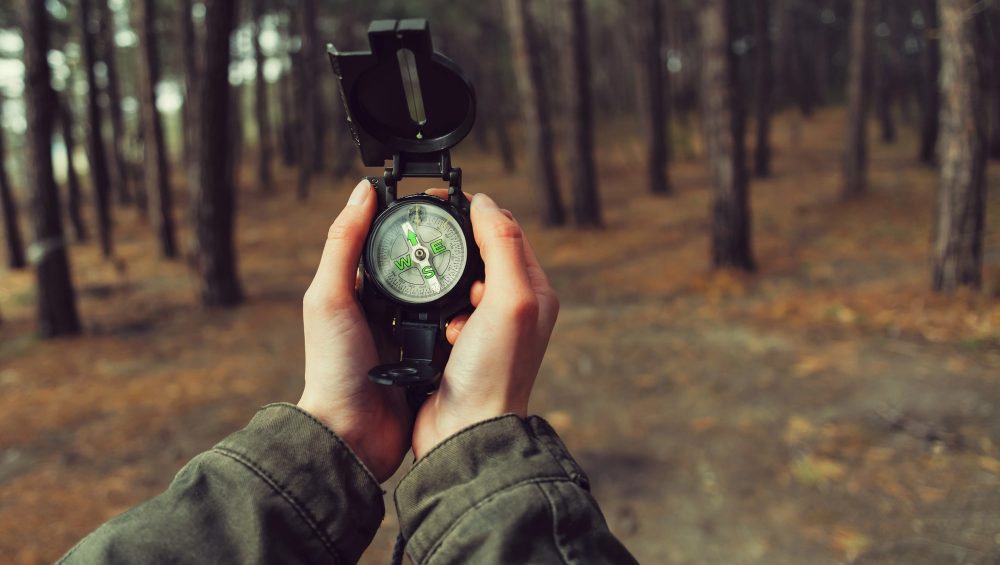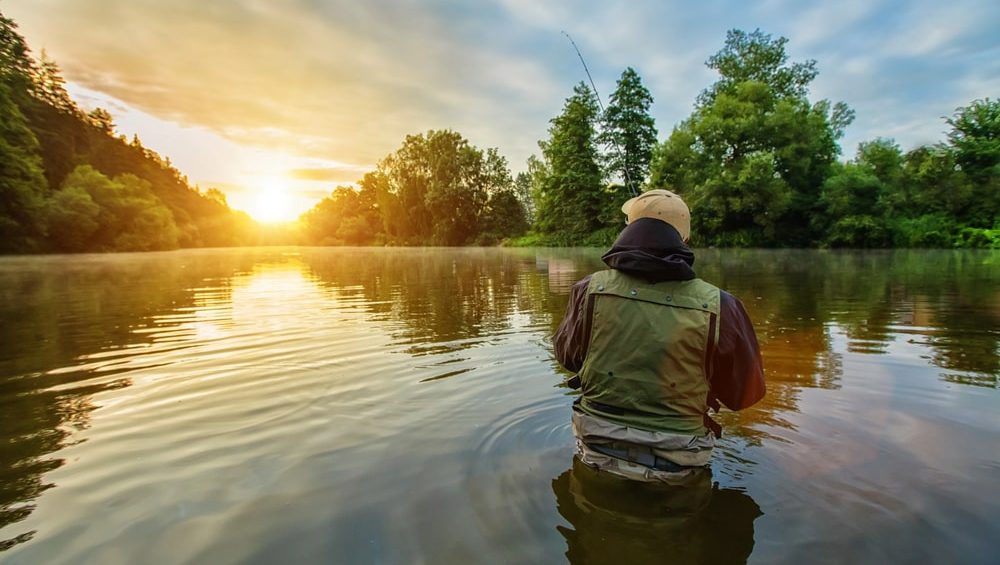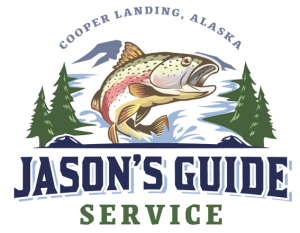Alaska is known as the Last Frontier or The Great Land. It is a huge state with diverse weather patterns. As our Anchorage, AK pink salmon fishing guide often says, if you don’t like the weather when you’re in Alaska, wait ten minutes; it will change.
When anglers book their guided fishing trips with Jason’s Guide Service on the Kenai River, one of the first questions is always what the weather will be like. My response is always, look at your weather apps daily and you will have a 50/50 chance of knowing what to expect.
I am going to talk about what you can assume weather-wise for each month that we do guided fishing trips, and what is the best gear to bring when you are fishing with us whether it be for the sockeye, silver salmon, and/or the rainbow trout and Dolly Varden char.
June 11th is the opening day every year on the Upper Kenai River for sockeye salmon, rainbow trout, and Dolly Varden char. June is the month with the biggest temperature swings from morning to afternoon, making clothing layering critical. The average high temperature is 65, with the average low of 40 degrees or less. We might be located in Cooper Landing, but we fish the entire Kenair River!
June is a month with very little precipitation, but the saying goes – never go anywhere in Alaska without rain gear. In fact, this is one of the most common mistakes we see in river fishing: not bringing the proper gear! We suggest that you wear lighter fleece or long underwear under a comfortable pair of pants and have a good layering system for your upper body. When wade fishing in June, the water can be very cold, usually in the low 40’s for a low temperature, and high 40’s, the higher water temps. Standing in the cold, glacial-fed Kenai River is always better with a warm pair of wool socks or two pairs of regular socks.
July in Cooper Landing has milder temperature swings from lows in the 50’s to highs in the low 70’s with more precipitation than in June. Alaska is not known for its downpours. Rain is usually light and constant all day long.
In July the water temps usually warm up with the lows in the high 40’s and the highs in the low 50’s. Layers are still a must as well as having a good rain jacket to go over your Gore-Tex breathable waders that we provide on all our guided fishing trips. We still recommend a warm pair of socks for any wade fishing. If we are primarily in the boat all day then lighter clothes and lighter socks are best so you don’t get too hot in the summer sun. Alaska is the Land of the Midnight Sun with the temperatures hitting their peak in the later afternoon.
August is the start of fall in Alaska. The beginning of August has the summer feel to it and the later part is when the changing of the colors starts and the cooler weather sets in. The temperature swings are a lot like July with 50-70 degrees being the normal swing and the possibility of cooler mornings later on.
August on the Kenai Peninsula is “monsoon” season. We get more precipitation in August than any month usually. With the rain comes warmer water temperatures The need for good rain jackets is a must and good light to medium weight tops. I like to have a heavyweight shirt in the boat as well, especially later in August for the early mornings.
September in August is usually dryer and cooler than August. The lows are in the high 30’s to low 40’s with the highs making it into the mid 50’s. September gets less rain and more wind than August, and brilliant fall colors.
I like to have at least one good windstopper layer on underneath my rain jacket or puffy that I wear in September. My go to in September is a silk weight shirt under a mid weight polar fleece with a windstopper puffy on top. Being a guide I have a multitude of outdoor clothing I wear to protect me from the elements, I understand your average outdoors person probably doesn’t have closets full of gear like I do, so lean on the side of caution and over dress in the fall, you can always take a layer off, but you can’t add a layer if you don’t have one on.
October can be downright chilly with lows being in the 30’s and your highs in the mid 40’s. It’s a debate as to whether October is the tail end of fall or the beginning of winter. We see rain but it isn’t that frequent. We even see snow in October while we drift the Kenai River. The great news about October is the crowds are gone but the fishing is world class.
In October I bundle up heavily with my thickest wool socks, medium-weight long-john bottoms and Primaloft pants under my waders. The top half of my body is layered in medium to heavy weight fleece and my biggest heaviest Primaloft hooded jacket. Definitely bring good fishing gloves and a warm hat for October.
No matter what month you fish the Kenai River with us, dress in layers and have a good rain jacket. I always recommend bringing polarized sun glasses and a ball cap for eye protection and to see into the river when fishing. We have lots of room in the boat for any extra clothes you bring. The key points here are that the weather is unpredictable, the daily temperature swings can be huge, and the wind usually blows at some point in the day.
There is no such thing as bad weather – only bad gear.
Feel free to call us anytime with any questions you want to ask your river fishing guide regarding the gear you have and want to bring on your guided fishing trip down the Kenai River. If you are ready to schedule a trip, contact Jason’s Guide Service today — with over thirty years of experience, we are ready to take you on your next trip!

